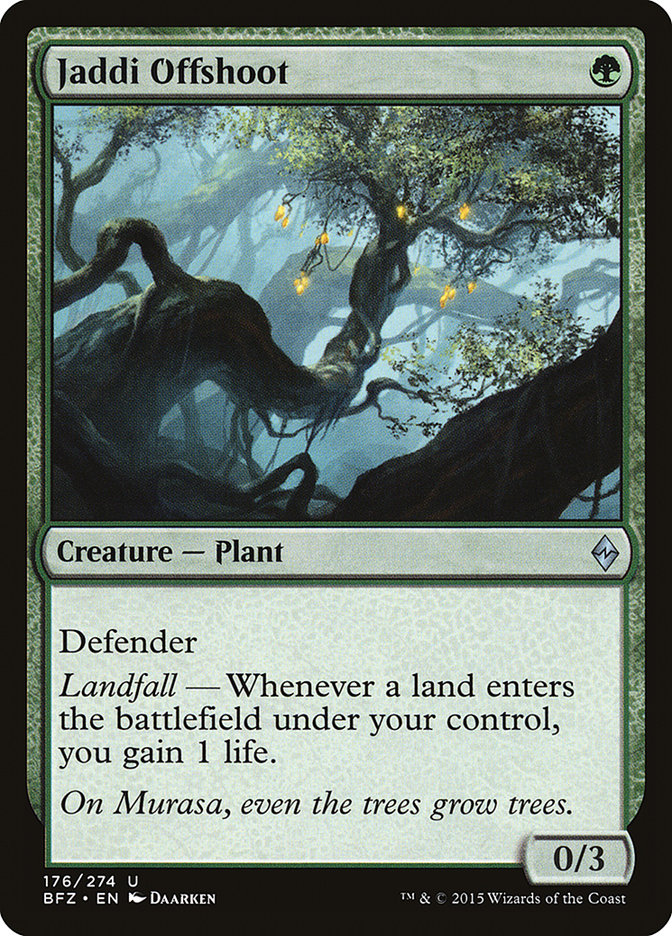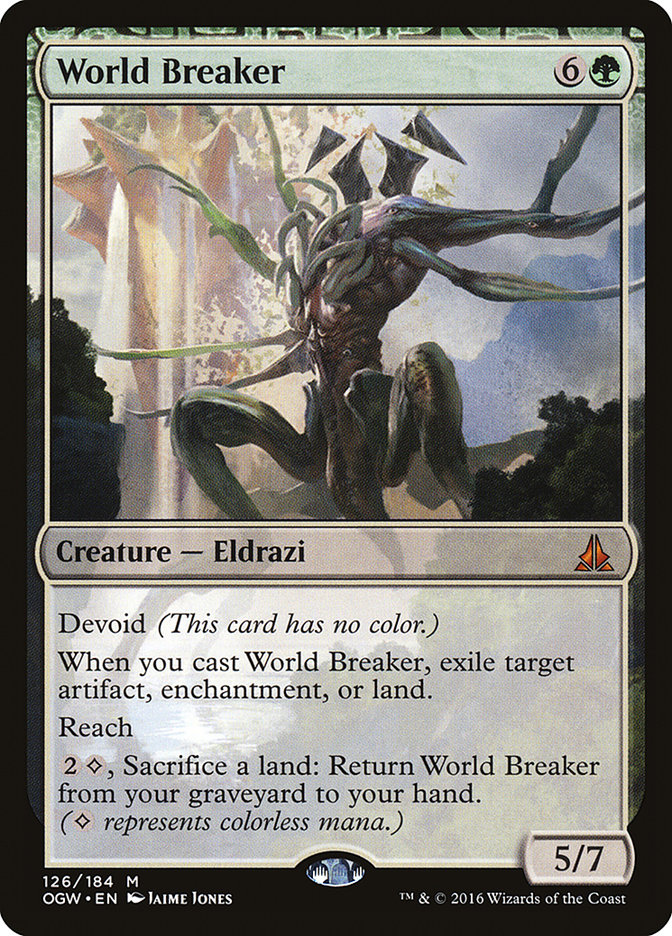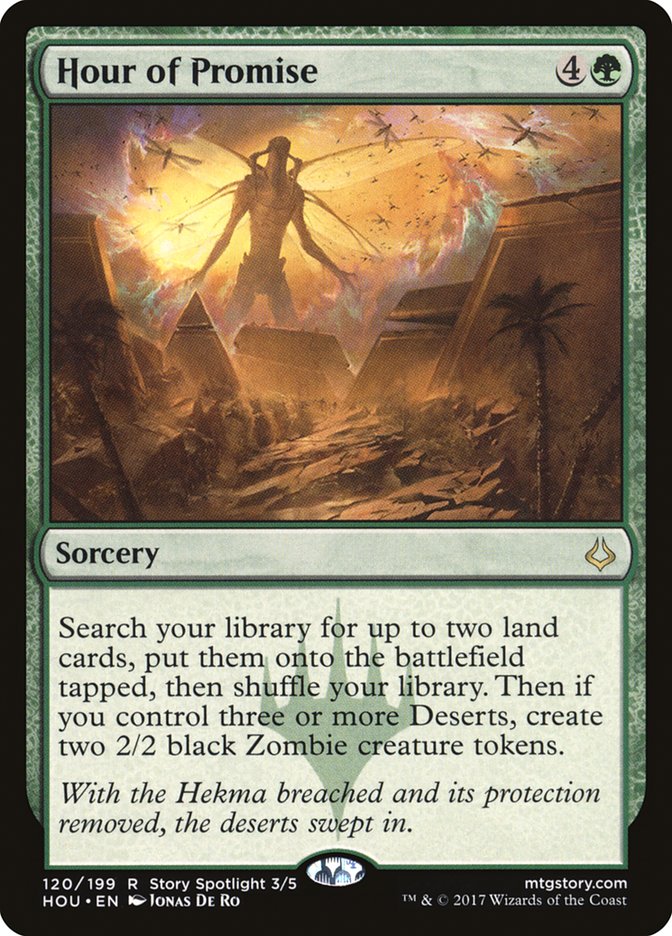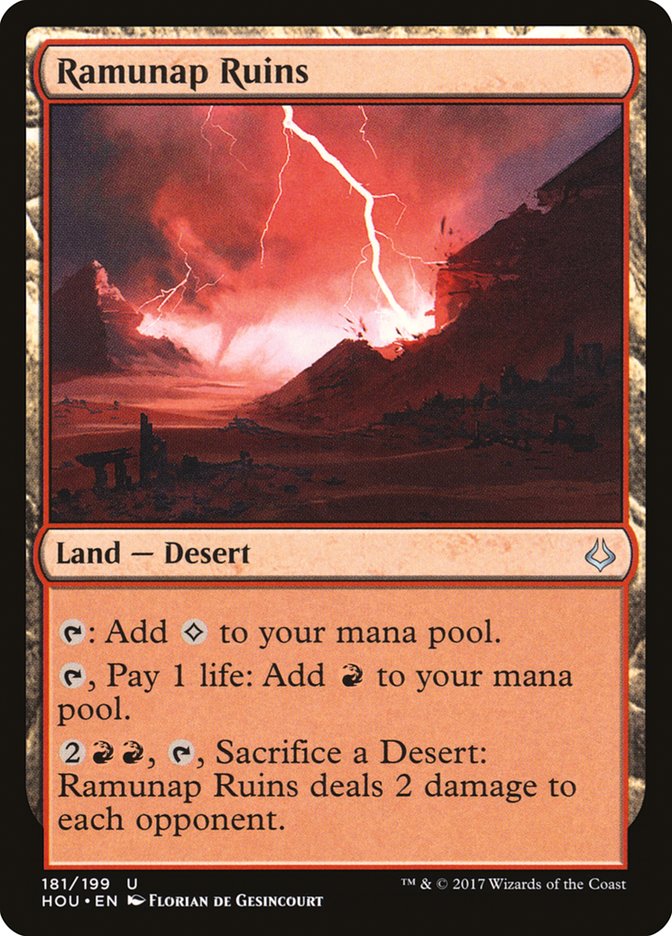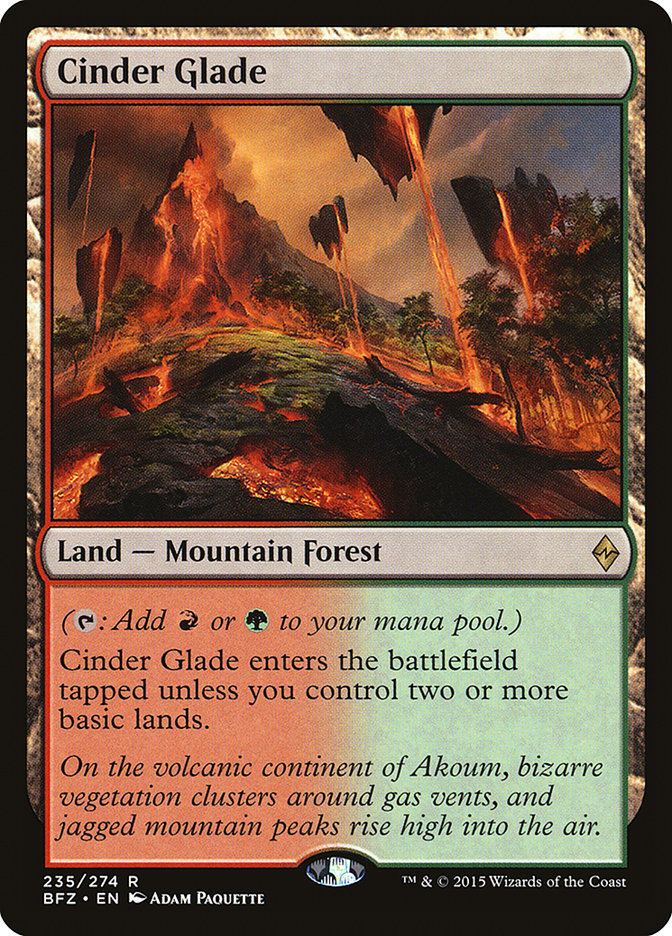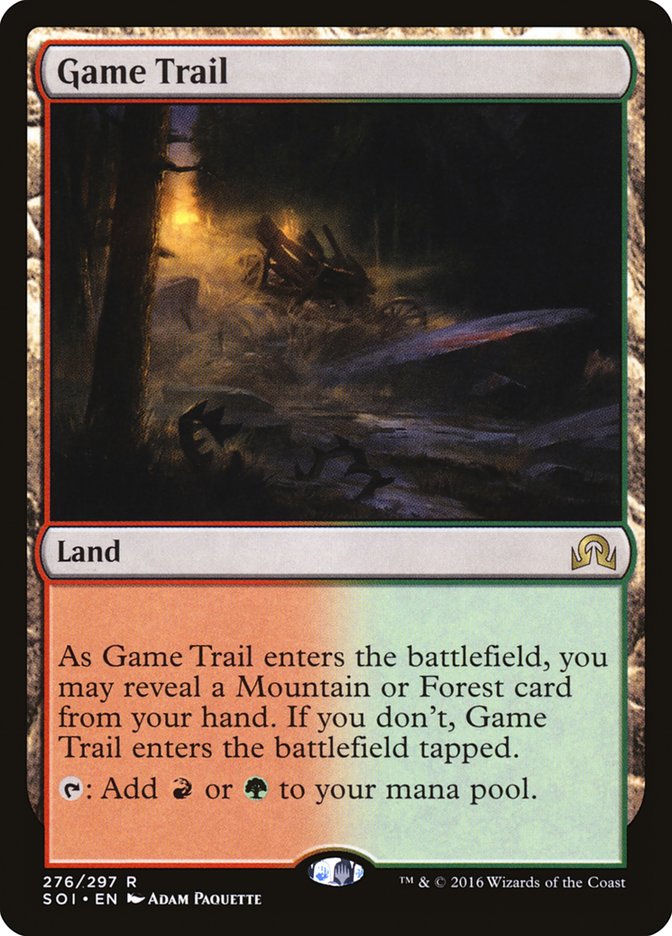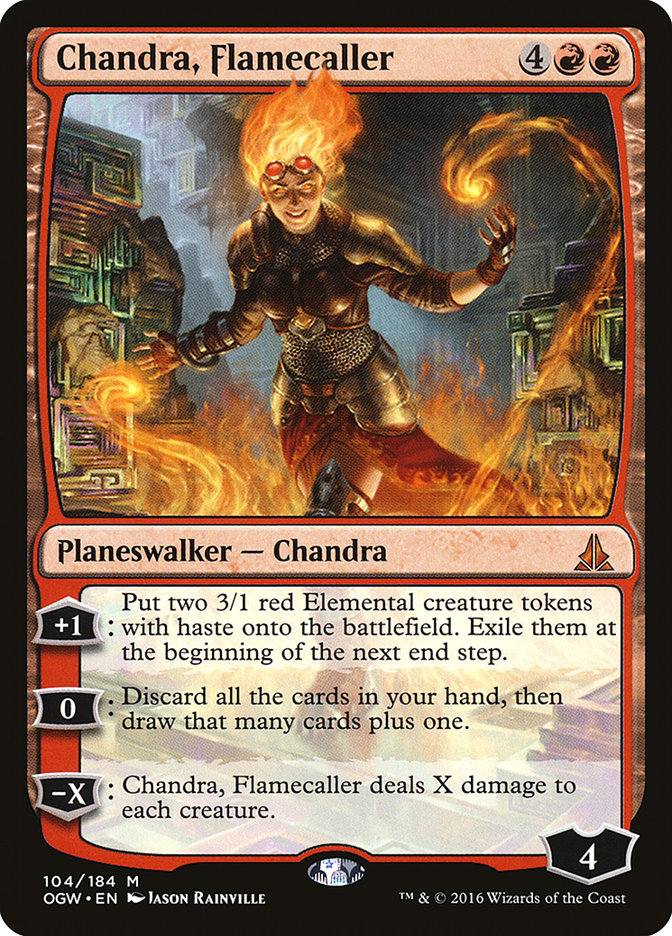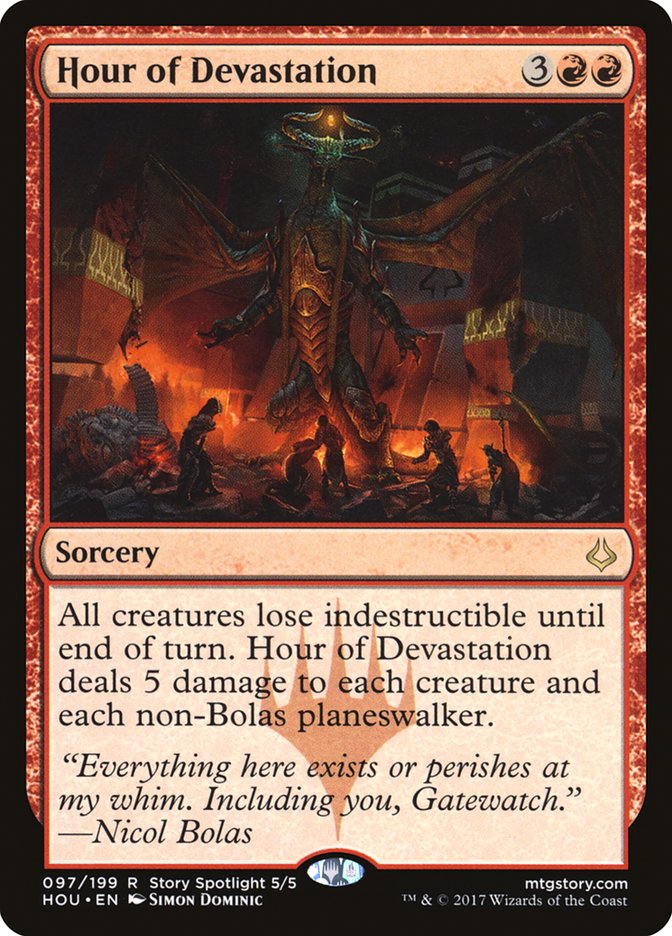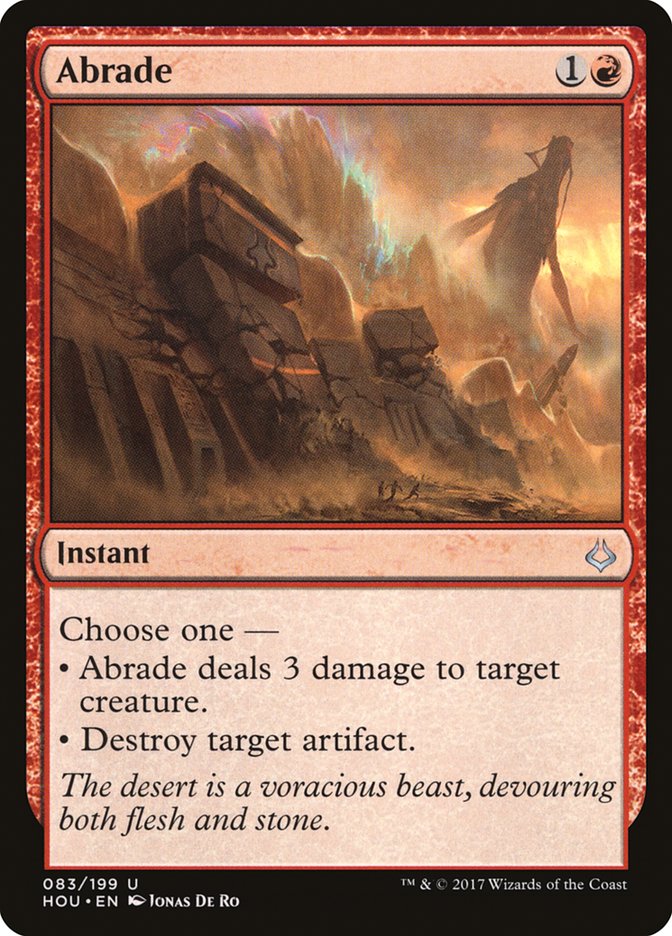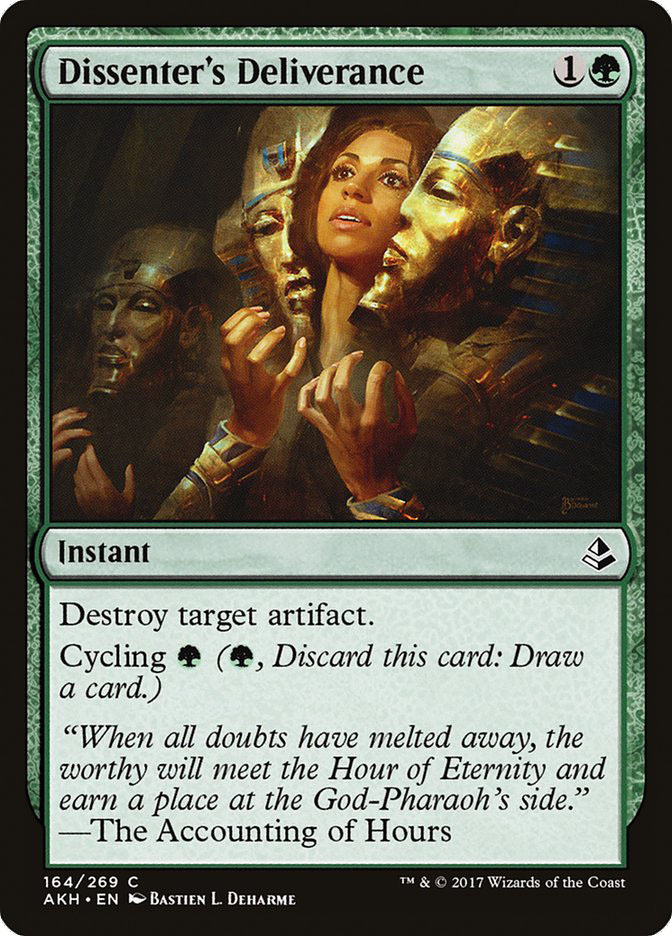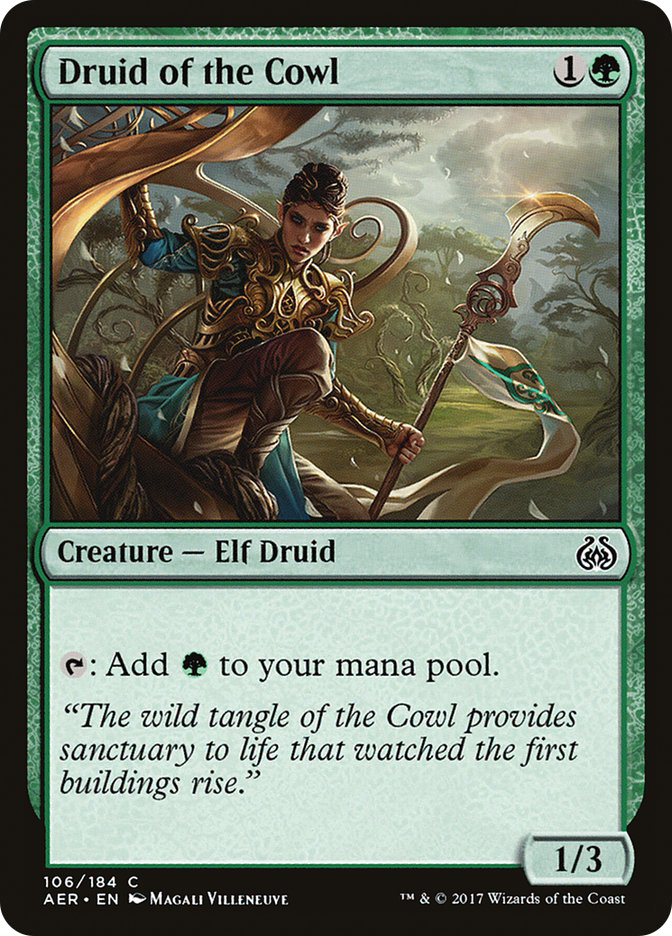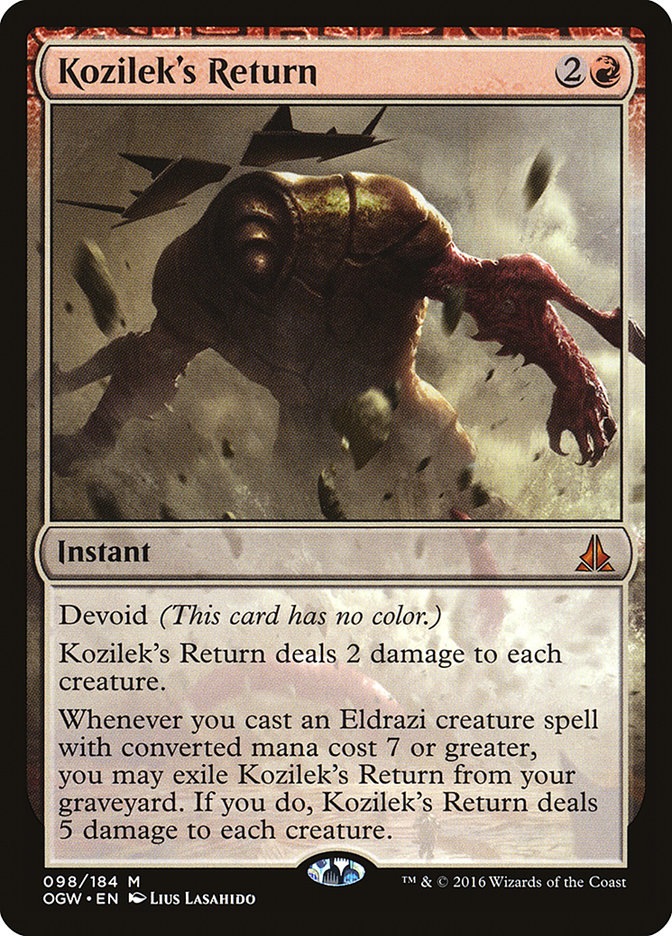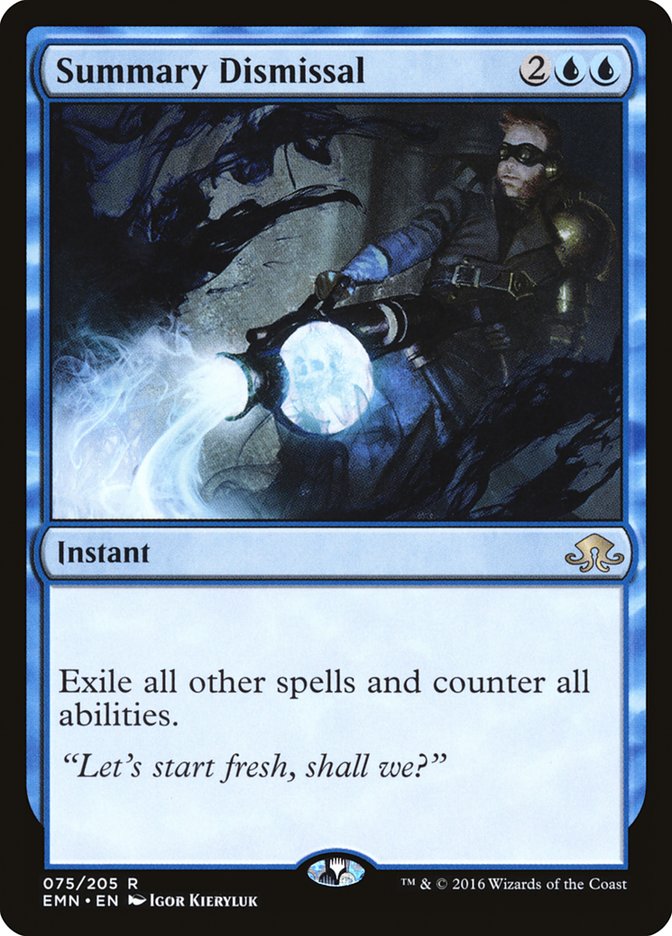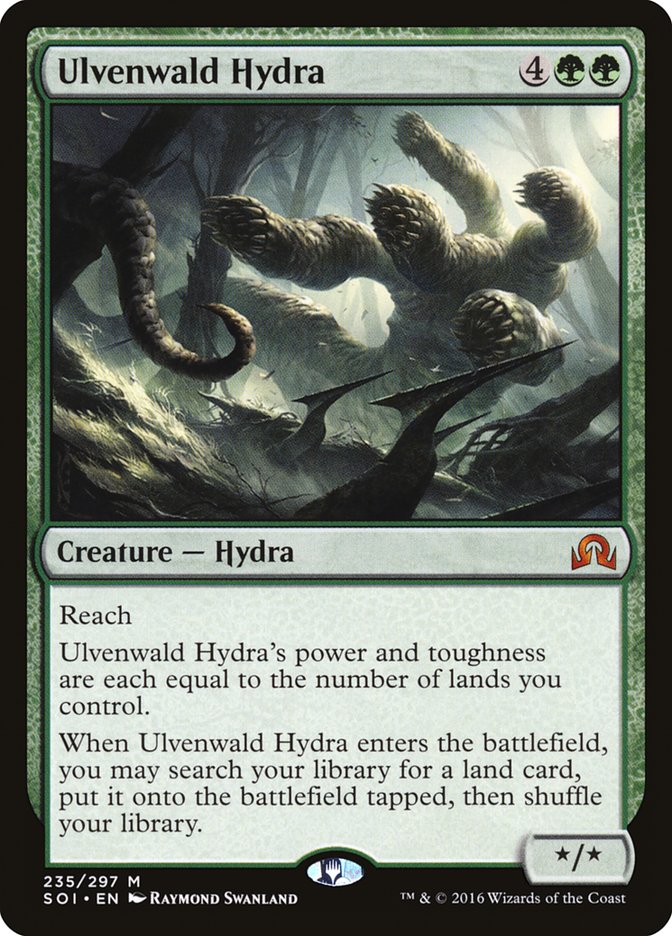This week brings some strange tidings. With Ramunap Red dominating Pro Tour Hour of Devastation, you’ve likely already read an article or two on “How Deck X Beats Ramunap Red,” but that’s not what we’re doing today.
Well, maybe a little.
Highly recommend this if u like ramp for the MTGO PTQ. Im 17-3 in leagues with no losses to zombies/monored/gift/control/mardu/energy yet. pic.twitter.com/vSgtzOQBgW
— Willy Edel (@bazardebagda) July 28, 2017
Last Friday, Willy Edel pumped out this tweet talking about how good his G/R Ramp deck was. And if you’ve kept up with my articles as of late, I’ve been tinkering with the deck a bit myself. After considering my options, I went with a very similar list of G/R Ramp for the Magic Online PTQ last weekend. Here’s what I ended up on, for reference.
Creatures (12)
Planeswalkers (2)
Lands (25)
Spells (21)

There’s a lot to unpack here, so let’s just dig in.
Cards like this seeing maindeck play will become a regular thing if Ramunap Red continues to be a dominant force in the metagame. In fact, I only played Ramp, and this version in general, because of how good I thought Jaddi Offshoot would be against the field. After all, by the time the PTQ started, the Top 8 had already been announced (along with their decklists) and I assumed many of the participants would lean toward that deck.
With that in mind, I took Willy’s ideas to heart. I wanted Jaddi Offshoot to do some early blocking, as well as gain some precious life points. If I could negate the late-game reach, then cards like Kozilek’s Return could do some good work. While Jaddi Offshoot isn’t exactly exciting against Zombies, Control, or midrange decks, the small points of life occasionally made all the difference. That extra time generated by Jaddi Offshoot allowed me to cast Ulamog, the Ceaseless Hunger or World Breaker and eventually swing the game in my favor.
Would I continue to maindeck Jaddi Offshoot? Probably, but only in a live-tournament setting. Magic Online has a way of moving quickly fast as far as metagaming is concerned. That is clearly shown by the Top 8 of the PTQ featuring zero copies of Ramunap Red, while Zombies took down the top spot. It didn’t take long for people to realize that Zombies was a favorite against Ramunap Red, and this was hammered home by having Ramunap Red on feature nearly every round at the Pro Tour. At some point, when Zombies beats Ramunap Red for the third time or so, we notice.
My goal in this PTQ wasn’t just to beat Ramunap Red. It never was. I just wanted a few extra cards to give me a good shot at beating them. My primary goal was to defeat all the deck that had “good matchups against Ramunap Red.” Ramp is a deck that sports a fine win percentage against the field, but those percentages increase as you make changes. By adding Jaddi Offshoot to the deck, I had to take something else away, which decreased my win percentage against stuff like B/G Constrictor and U/R Control. Luckily, the deck is solid against both already, so making that change didn’t hurt much.
The other weird card in my deck that most people can’t really wrap their head around is Natural Connection. I get it. Instant-speed ramp spells are weird. But it does play an important role in the archetype. Not only does it allow you to hold up mana for Kozilek’s Return, but it sends you to five mana for Hour of Promise when your opponent might not exactly be ready for it. I’ve had quite a few instances where my opponent tapped out for something early instead of holding up Negate or Censor, only to have me resolve my back-breaking Hour of Promise.
Hitting your physical land drops is also important in the deck, as turning on Shrine of the Forsaken Gods is huge. Ramp effects that don’t physically put a land onto the battlefield are generally worse than the ramp effects that do, even if they have the alternate ability to generate a Clue token. To be honest, I don’t know which option is best. It feels a lot like arguing between Void Shatter and Disallow. Both have their positives and negatives, but most of the time they’re just going to do the same thing.
As you can plainly see, I cut all the Deserts from the original list. Why? Well, I don’t care much about making some Zombies off Hour of Promise. For the most part, if I draw Hour of Promise, I’m casting it to find Sanctum of Ugin and Shrine of the Forsaken Gods. These are the two cards that allow the deck to function smoothly. I get that the second copy of Hour of Promise would ideally grab a Desert or two and create some blockers, but games didn’t seem to get to that point very often.
What I was concerned about was the minor points of damage taken by said Deserts. When the format is chock-full of aggressive strategies, to the point where you’re maindecking Jaddi Offshoot, every point of life counts. For that reason alone, I chose not to play a single Desert in the deck.
While having Deserts in your deck can power up your excess copies of Hour of Promise, it is also important to note that they also give you access to Eldrazi out of the sideboard. Thought-Knot Seer is pretty good against red decks and can give you an alternate angle of attack in a pinch, but I didn’t think that plan was good enough to include.
If you end up going the route of Deserts, I wouldn’t blame you, but that just isn’t for me.
I can’t tell you how often I’ve had Game Trail enter the battlefield tapped. And more often than not, it entering the battlefield tapped late in the game will cost you dearly. Cinder Glade will do you no favors in casting your early spells, but the joke here is that we don’t actually need it to. It’s not like our deck is chock-full of Magma Spray or other cheap spells. And if I’m being downright honest about it, I think I’d probably play Cinder Glade over something like Copperline Gorge (if it were Standard-legal).
Much like the Michael Majors Temur Emerge decks from last year that featured Emrakul, the Promised End, we’re playing very few lands that enter the battlefield tapped. We can’t afford to miss out on a big spell on our fifth or sixth turn. With a deck like ramp, stumbling on your critical turns is how you lose the game.
Hour of Devastation is the card that drew me back in. No, it isn’t very good against Ramunap Red, but it is insane against Zombies, and more than adequate in a number of other matchups. I felt like Chandra, Flamecaller was slightly better than Hour of Devastation in the maindeck, simply because Gideon, Ally of Zendikar was on the downswing. If Gideon, Ally of Zendikar starts to come back in a big way, then I’ll probably swap out the two. Plus, Hour of Devastation kills your Jaddi Offshoot and Druid of the Cowl!
While Chandra, Flamecaller is an expensive card in the deck, it offers quite a bit of power and versatility. Not only can it sweep the battlefield of minor threats, it also gives you a way to dig for your bigger finishers while also putting Kozilek’s Return in the graveyard. The zero ability is hugely underrated, but all three abilities are useful.
We aren’t energy-themed, so Abrade gets the obvious nod over Harnessed Lightning. I have seen some versions play Attune with Aether, a few copies of Wastes, and Ruin in Their Wake as a Rampant Growth proxy. However, we don’t have a lot of powerful four-drop spells to ramp into, so I didn’t feel it was necessary to play something like that. Our big spells start at five, which means any three-drop ramp spell is sufficient. But that also puts an emphasis on interacting with our opponent on the first or second turn.
Jaddi Offshoot is fine in this situation, but not always enough. Abrade kills most two-drop creatures and the occasional Heart of Kiran, but I don’t mind having one or two more ways to deal with artifacts. Decks like Mardu Vehicles can be problematic for a deck like G/R Ramp, mostly due to the strength of Heart of Kiran. For that reason alone, Abrade gets the nod over any other potential removal spells, but it’s also why we have a few copies of Dissenter’s Deliverance lying around.
I was not a huge fan of this card. Reflecting back on the points where we discussed ramp spells needing to put a land onto the battlefield, and having zero four-mana spells in our maindeck, and you should already understand why the card probably doesn’t belong in our deck. On top of that, we’re giving our opponents a juicy target for their Fatal Push or Grasp of Darkness, where Jaddi Offshoot is a full mana cheaper and potentially more annoying.
If I had to do it all over again, I’d probably try something else in this slot. Part of me ached for a few copies of Chandra, Torch of Defiance, for multiple reasons. Not only could it protect you from four-toughness creatures (actually pretty tough to deal with), but it ramps, chips away at opposing planeswalkers, and gives you a source of card advantage if you manage to clear the battlefield. I know that cutting Druid of the Cowl for Chandra, Torch of Defiance seems strange, and having two different Chandras in your deck is awkward, but it is possible that this is the missing piece to the Ramp puzzle.
Well, either that or maybe just Glorybringer.
Such great pals, these three.
I think one of the best parts about G/R Ramp at the moment is that the front half of Kozilek’s Return is awesome. So many decks in Standard get swept up by the front half, which buys you enough time to hit them with the back half. When discarding Kozilek’s Return is better than casting the front side, G/R Ramp probably isn’t very good.
World Breaker, by itself, isn’t all that impressive in the current Standard format. More often than not, it busts up a land and leaves behind a solid target for a removal spell. However, in combination with Sanctum of Ugin and the back half of Kozilek’s Return, it bridges the gap to Ulamog, the Ceaseless Hunger perfectly. And since Hour of Promise regularly finds Sanctum of Ugin, starting the chain of giant monsters with World Breaker is more than fine. In fact, I’ve been considering moving to four copies of World Breaker and only two copies of Ulamog, the Ceaseless Hunger for this very reason. The reason I haven’t yet is because Hour of Promise enables you to cast Ulamog, the Ceaseless Hunger on the fifth turn.
While Ulamog, the Ceaseless Hunger isn’t great against Ramunap Red, it usually just wins the game on the spot against the rest of the format. And assuming you have a Kozilek’s Return in the graveyard, you get to clean up their side of the battlefield entirely. Most of the time, like with World Breaker, your goal is to attack their mana, but the strength of Ulamog, the Ceaseless Hunger lies in its ability to deal with any potential problems thrown at you. At the moment, Ramp isn’t really on people’s radar. That means you’re going to get a lot more free wins than normal because control decks aren’t packing stuff like Summary Dismissal.
It is no secret that this combination of cards is the backbone of the deck. Ulamog, the Ceaseless Hunger has been a troublesome monster to deal with for almost two years now. In fact, it was the primary weapon Jim Davis used to beat me in the finals of the 2015 Players’ Championship…in both Standard and Modern. Everyone knows just how good Ulamog, the Ceaseless Hunger can be, but the real question should be centered around asking whether or not Ramp is good enough. Right now, I think it is.
Oddly enough, G/R Ramp sits in a strange spot in Standard. You have to jump through some hoops to beat Ramunap Red, but your late-game can easily overcome most obstacles. For that reason, I think G/R Ramp is the best deck in Standard. My losses in the PTQ came in the form of the mirror, and ultimately making a bone-head mistake in the quarterfinals. It was…not pretty, but I was very happy with how the deck functioned.
Gameplans Against the Top Decks
Here is what I tend to do against the top decks in the format, but I do mix it up on occasion based off how my opponent sideboards. Instead of a +/- sideboard guide, here is a general guideline to help you understand what’s important.
Creatures (26)
- 4 Falkenrath Gorger
- 4 Village Messenger
- 4 Bomat Courier
- 3 Kari Zev, Skyship Raider
- 3 Hazoret the Fervent
- 4 Ahn-Crop Crasher
- 4 Earthshaker Khenra
Planeswalkers (2)
Lands (24)
Spells (8)

Sideboard out Ulamog, the Ceaseless Hunger and Hour of Promise. You can beat them by sweeping their battlefield over and over again and finally just cleaning up with any threat. You can probably sideboard out a World Breaker or two, but mostly you just want to keep your curve pretty low. In doing this, you can also sideboard out a land or two, depending on how many expensive spells you leave in your deck.
Obviously, you can trim the Dissenter’s Deliverance as well, but be wary of sideboard cards like Aethersphere Harvester and don’t be afraid to sideboard it back in.
Creatures (23)
- 3 Kalitas, Traitor of Ghet
- 4 Relentless Dead
- 4 Diregraf Colossus
- 4 Cryptbreaker
- 4 Lord of the Accursed
- 4 Dread Wanderer
Lands (24)
Spells (13)

Sweepers are key here, but we still want to go big (unlike our plan against Ramunap Red). I like bringing in Hour of Devastation and Glorybringer while cutting Jaddi Offshoot and Dissenter’s Deliverance. You can also trim a Druid of the Cowl or three in favor of Tireless Tracker to completely brick Fatal Push. We’re cutting our cheap creatures because they get caught up in the fallout of Hour of Devastation, but also because they just don’t do enough.
Creatures (4)
Planeswalkers (1)
Lands (25)
Spells (30)

Removal like Kozilek’s Return isn’t very useful here, but having some number of Abrade after sideboarding is more than fine. They’re usually going to kill you with Torrential Gearhulk, after all. Dissenter’s Deliverance is a significantly better card, but I think we have enough to cut already. Obviously, this is another crapshoot matchup for Jaddi Offshoot, so feel free to cut those as well. I’m fine bringing in Tireless Tracker, Glorybringer, and even Void Winnower.
Creatures (20)
- 2 Kalitas, Traitor of Ghet
- 3 Tireless Tracker
- 4 Grim Flayer
- 2 Verdurous Gearhulk
- 4 Winding Constrictor
- 1 Rishkar, Peema Renegade
- 4 Walking Ballista
Planeswalkers (5)
Lands (23)
Spells (12)

Their creatures are usually too big for Jaddi Offshoot to block (seeing a pattern yet?), so I’m okay getting rid of those. Druid’s Deliverance is decent but not phenomenal, since it can kill Vehicles, Verdurous Gearhulk, and Walking Ballista. Sweepers like the back half of Kozilek’s Return and Hour of Devastation play a big role in catching you back up, as you’ll usually get dominated in the early turns. Glorybringer is also fine.
Fire off your removal at anything that moves. Grim Flayer and Winding Constrictor are pretty annoying if left unchecked. The front half of Kozilek’s Return doesn’t do much, so fire it off whenever you can to get a small amount of value.
Creatures (19)
- 2 Thraben Inspector
- 4 Scrapheap Scrounger
- 4 Toolcraft Exemplar
- 4 Veteran Motorist
- 2 Walking Ballista
- 3 Glorybringer
Planeswalkers (5)
Lands (24)
Spells (12)

Honestly, this matchup probably isn’t very good. Vehicles dodge your sweeper effects, and their cheap creatures can punch through a lot of damage without forcing them to over-extend. Abrade alleviates that pressure on both ends, but will often get overloaded with targets. Use Kozilek’s Return aggressively to protect your life total. There’s nothing more frustrating than dying to Unlicensed Disintegration targeting Ulamog, the Ceaseless Hunger.
I’m waffling on how to sideboard in this matchup. Glorybringer is fine. Hour of Devastation is often your only out at cleaning up Gideon, Ally of Zendikar. Your maindeck is mostly fine, but the only real option for sideboarding here is cutting Jaddi Offshoot and Chandra, Flamecaller. After sideboard, I’d expect them to go a bit slower to dodge Kozilek’s Return, but that should be their downfall. You’re the king of midrange, after all.
Last but Not Least
G/R Ramp features quite a few throwaway cards. We have so many flex spots that I’m sure I could build the deck five or six different ways and still keep the heart intact. Much like Aetherworks Marvel before it, we just have to focus on the utility cards. We know that Kozilek’s Return, Hour of Promise, and the big Eldrazi are key components, but how you build the rest is entirely up to you.
At the moment, I think this version is very good, and will be a great starting point for anyone who wants to try out the deck for themselves. I’d suggest taking it through a trial run before making any changes, though. You’ll want to get a feel for the sequencing, mulligan decisions, and so on before you start customizing. At the very least, I hope this is was a helpful starting point for building the deck to your liking.
While Ramunap Red is going to be big for now and we should probably stick to Jaddi Offshoot, I’m sure that the next month or so will show us that the format is much different from what we were led to believe by the results at the Pro Tour. And when that happens, and people catch up on punishing Ramunap Red decks, we can explore alternatives like Chandra, Torch of Defiance; Thought-Knot Seer; and possibly energy variants with Harnessed Lightning. Heck, even Ulvenwald Hydra could make a comeback!
If G/R Ramp isn’t your thing, don’t worry. I’m sure next week we’ll return to our regularly scheduled Temur Box programming.


